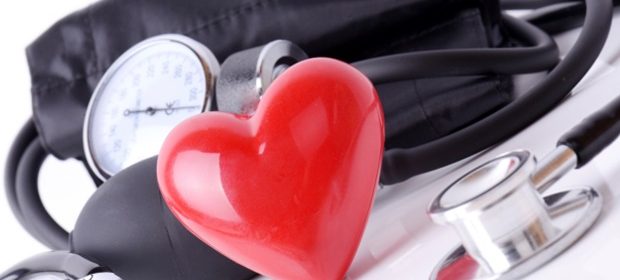Uncontrolled high blood pressure responsible for cardiovascular emergencies in the USA

New research led by a Keele University professor has found that uncontrolled high blood pressure is the main cause of cardiovascular emergencies in the USA.
"Essential" hypertension – the name given to high blood pressure not caused by other diseases – was found to be present in 13% of all cardiovascular disease diagnoses in US emergency departments, representing more than 2.7 million people, in a new study led by Keele's Professor Mamas Mamas.
Publishing in the Journal of the American Heart Association, Professor Mamas and his colleagues studied data from more than 20 million emergency department visits, analyzing cardiovascular diagnoses made during emergency department visits from 2016-2018. The sample was 48.7% women, and the average age was 67 years.
Men in the sample were more likely to have other diseases in addition to cardiovascular disease, such as diabetes, while women had higher rates of obesity, high blood pressure and medical conditions that affect blood vessels in the brain.
The most common heart- or stroke-related diagnoses for women seen in the emergency department were high blood pressure (16% of visits), high blood pressure-related heart or kidney disease (14.1%) and atrial fibrillation (10.2%). The most common diagnoses for men were high blood pressure-related heart or kidney disease (14.7%), high blood pressure (10.8%) and heart attack (10.7%).
These visits resulted in hospital admission less than 3% of the time and with very few deaths – less than 0.1%. This suggests that these visits were mostly related to the management of hypertension.
Previous studies have shown sex differences in patterns of cardiovascular disease (CVD) among hospitalized patients. However, examining CVD encounters in the emergency department provides a more complete picture of the cardiovascular health care needs of men and women, as it captures encounters prior to hospitalization. Therefore, this analysis of 15 CVD conditions helps to better understand the full spectrum of acute CVD needs, including sex disparities in hospitalization and risk of death.
Our work with this large, nationally representative sample of cardiovascular emergency visits highlights differences in health care needs of men and women, which may be useful to inform planning and provision of health care services. We also encourage further research into understanding the underlying factors driving the differences in CVD patterns and outcomes between men and women."
Professor Mamas Mamas, Lead Author
Keele University
Raisi‐Estabragh, Z., et al. (2022) Differential Patterns and Outcomes of 20.6 Million Cardiovascular Emergency Department Encounters for Men and Women in the United States. Journal of the American Heart Association. doi.org/10.1161/JAHA.122.026432.
Posted in: Medical Research News | Medical Condition News
Tags: Atrial Fibrillation, Blood, Blood Pressure, Blood Vessels, Brain, Cardiovascular Disease, Diabetes, Health Care, Heart, Heart Attack, High Blood Pressure, Hospital, Kidney, Kidney Disease, Obesity, Research, Stroke
Source: Read Full Article